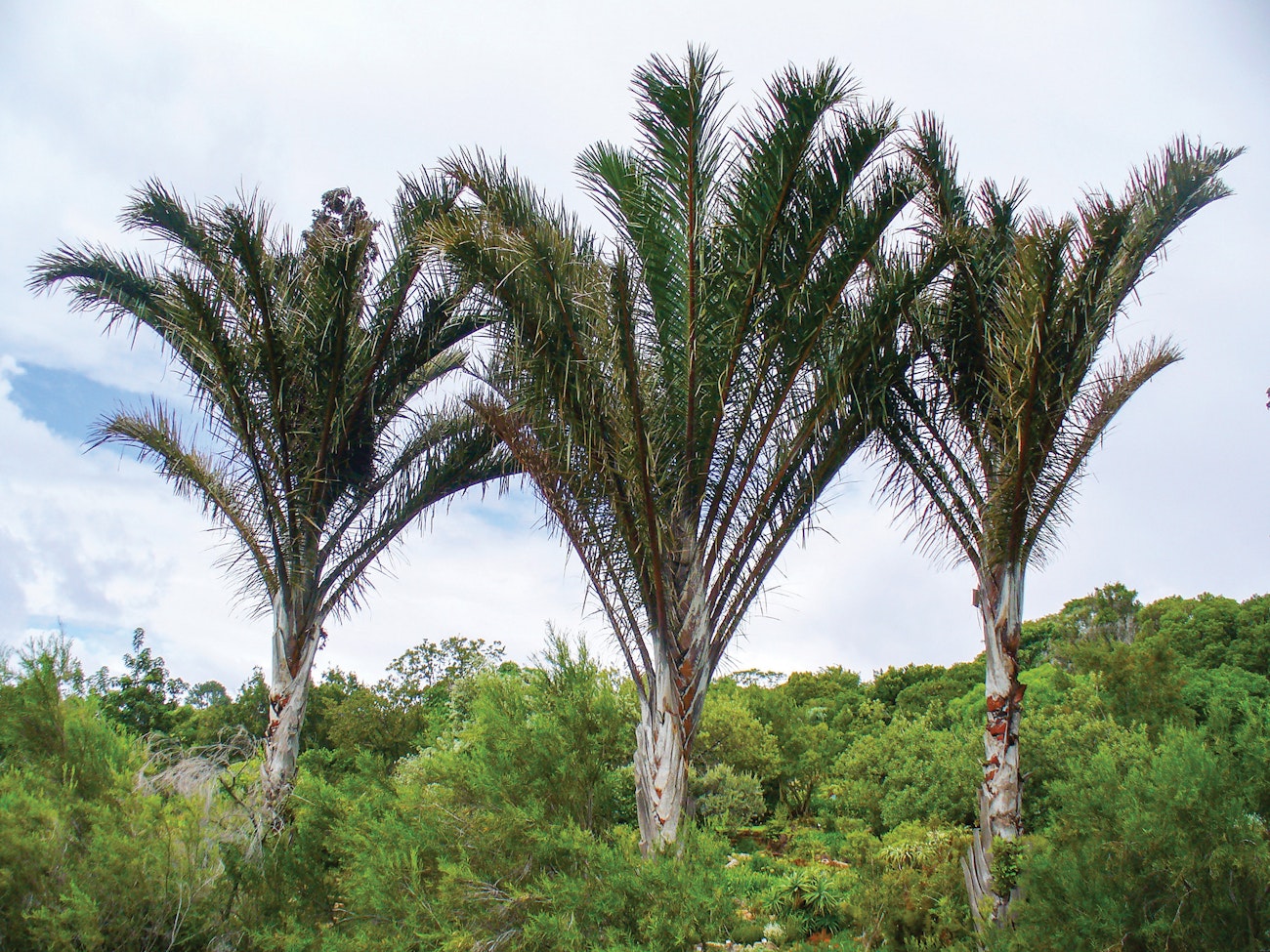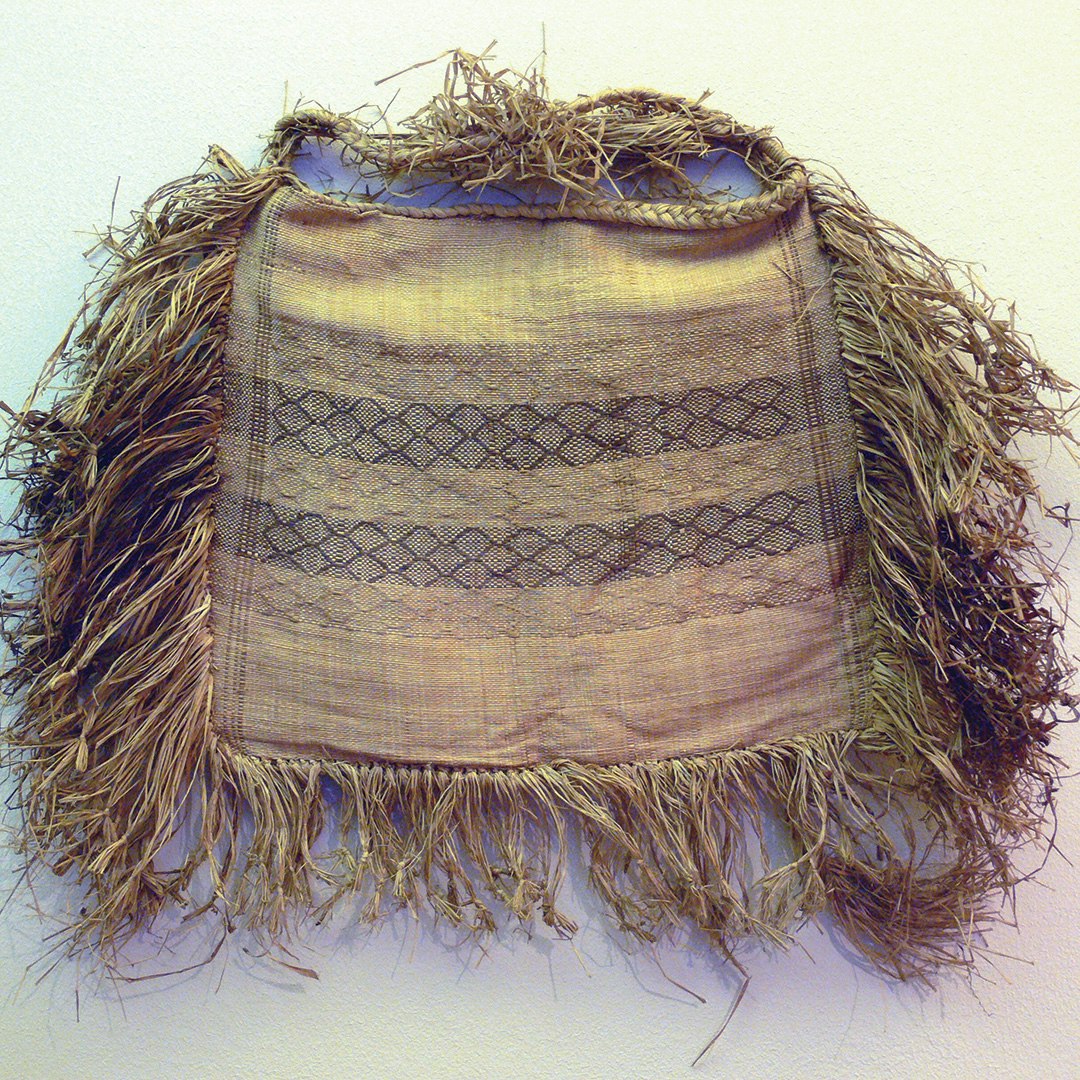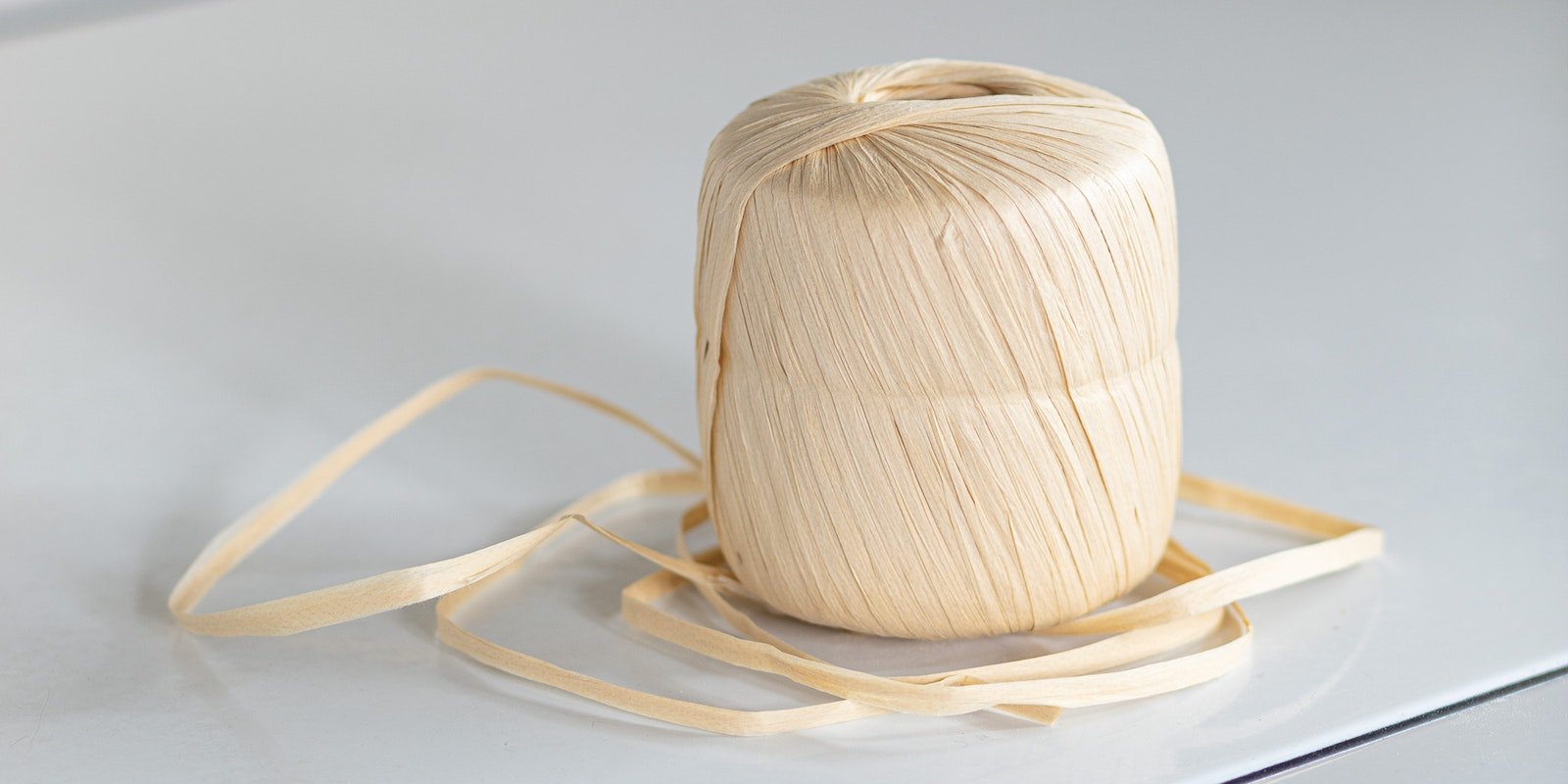I remember clearly my older sister making a macramé raffia purse in the 1960s. I was too young to tackle the same project, but for some reason, that color and that fiber has intrigued me ever since. I have purchased bundles of raffia and halfheartedly tried to use them in weaving—but the strands seemed too short to use on a floor loom, and they weren’t uniform in width, making them even more problematic. In addition, at least in my world, raffia came in small bundles from the craft store. In the end, I used the raffia as ribbon on packages and as accents in crafts.
I was at The National NeedleArts Association tradeshow (TNNA) in June 2019 when I saw Ra-Ra Raffia by Wool and the Gang. I don’t know how long they had been selling this raffia yarn, but it was new to me, and I was intrigued. Then, in the way that things often happen, not long afterward I saw an older issue of Crochet magazine (Summer 2018) that featured Universal Yarn’s Yashi raffia crocheted into a floor mat, and I was given a box of the natural color. These raffias were not the raffia I knew. They came in skeins of continuous strands that measured 99 yards and longer, and the strands were uniform. In addition, instead of the two colors I was used to seeing, a khaki green and a dusty natural tan, this raffia came in colors: not a lot of colors to be sure, but enough to have fun with.

Raffia palm trees. Photo by Andrew Massyn
Raffia originates from the raffia palm tree (Raphia farinifera), a tree that originates in Madagascar but can now be found in the Phillippines and tropical Africa. The branches of the raffia palm can be more than 18 yards long and are made up of hundreds of thin leaves. Those leaves when cut vertically yield fibers up to 1½ yards long. Raffia has traditionally been used for tying up plants, and for making shoes, handbags, placemats, baskets, and many other household items. It can be crocheted, knitted, twined, and knotted. In Madagascar, raffia is also woven into mats called rabane that are sold commercially and often used as wall coverings or floor mats.
The two raffias, the “true” raffia and the Yashi raffia yarns mentioned earlier, have similar beginnings but are processed very differently. Let’s call them raffia 1 and raffia 2. For raffia 1, the long fibers are split, sun-dried, sorted, sometimes dyed, and then wound into put-ups for distribution. To make raffia 2, the fiber is ground up and then processed in much the same way as paper or rayon. In fact, some raffia 2 for sale today is dubbed paper- or rayon-raffia. Both raffias are biodegradable, compostable, and obtained from a renewable resource. They are also water resistant.

A bag woven with traditional raffia, Linden Museum Stuttgart. Photo by Karl Heinrich
Whether you want to weave with raffia, crochet with it, or simply tie up gifts with it, I think you will find the new raffia available today, as well as traditional raffia, fibers with a lot of possibilities.
Susan E. Horton is a former editor of Handwoven magazine.
Originally published May 11, 2021; updated January 10, 2024.

